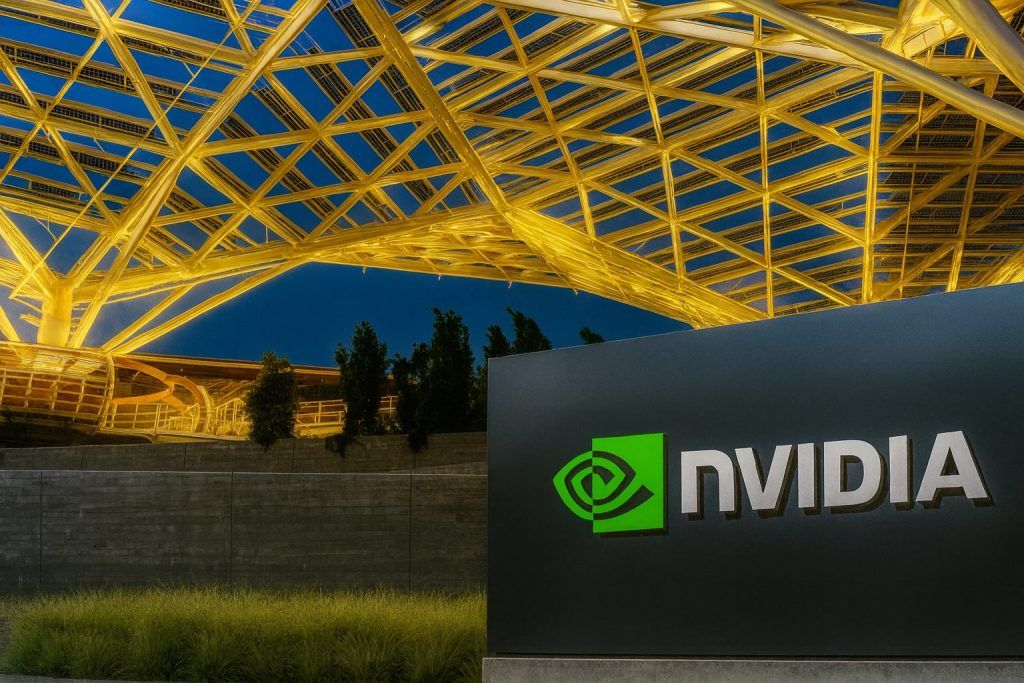- Private, Not Public:Polymarket is not publicly traded on any stock exchange and has no live crypto token yet. The platform’s valuation recently skyrocketed to ~$8–10 billion after a massive investment by the NYSE’s parent company, but it remains privately held [1]. There’s no stock price or token chart for Polymarket as of late October 2025, though insiders hint a “POLY” token is in the works [2].
- $2 Billion Wall St. Endorsement: In early October, Intercontinental Exchange (NYSE: ICE) – owner of the New York Stock Exchange – announced a $2 billion stake in Polymarket, valuing the crypto-based betting startup near $8–10 billion [3]. ICE’s stock jumped ~4% on the news, signaling investor excitement for this bold crypto foray [4]. ICE will also partner with Polymarket to monetize its data, treating crowd-sourced odds as a new market indicator [5].
- Token & Airdrop Teased:Polymarket’s CMO confirmed on Oct 24 that “there will be a token, there will be an airdrop,” but only after Polymarket’s U.S. relaunch [6] [7]. The POLY token (as teased by the CEO) is expected in 2026 and will have “true utility” (e.g. governance, staking) rather than short-term hype [8]. Early users with high trading volumes may qualify for the airdrop, though Polymarket is watching for wash-trading “farmers” gaming the system [9] [10].
- U.S. Comeback Imminent: After a 3-year U.S. ban, Polymarket secured a CFTC no-action letter in Sept 2025 allowing it to legally re-enter the U.S. market [11]. It acquired a CFTC-licensed exchange (QCEX) for $112 million to fast-track compliance [12]. The U.S. Polymarket site could go live any day – a regulatory filing indicated an October launch, though the early-Oct government shutdown delayed approvals [13] [14]. U.S. bettors will soon be able to legally trade on Polymarket’s yes/no markets (e.g. NFL games, elections) using cryptocurrency.
- Latest Headlines:Polymarket grabbed headlines this week. On Oct 22, the NHL became the first major U.S. sports league to partner with prediction markets, inking multiyear deals with Polymarket and rival Kalshi [15]. The agreements let Polymarket use official NHL data and logos as it expands into sports betting markets. Days later, on Oct 24, Polymarket’s team publicly confirmed its upcoming token and U.S. plans, fueling buzz in crypto circles [16]. Meanwhile, prediction markets are booming overall – insiders say Polymarket is already in talks for another funding round that could value it as high as $15 billion, underscoring red-hot investor demand [17].
- User Activity Skyrockets: Polymarket’s platform activity is surging. It now counts over 1.35 million traders globally, and combined volumes across major prediction exchanges hit all-time highs in recent weeks, even surpassing the frenzy of the 2024 election season [18]. In September 2025 alone, Polymarket handled roughly $773 million in bets (mainly crypto-denominated USDC), though regulated rival Kalshi briefly led with ~$1.3 billion (boosted by sports markets) [19]. Popular Polymarket wagers range from politics and economics to pop culture – users have bet on “When will the U.S. government shutdown end?” and even the least-streamed Taylor Swift song on a new album [20]. Markets on geopolitical events (elections, wars) and sports championships draw deep liquidity, often tens of thousands of dollars, reflecting the platform’s growing breadth.
- Regulatory Twist & Turn: Polymarket’s rapid rise hasn’t been without hurdles. In 2022, it was fined $1.4 million by the CFTC and forced to block U.S. users for operating an unregistered event-betting platform [21]. International regulators also cracked down – by late 2024, authorities in Switzerland, France, and Belgium had blacklisted Polymarket’s site as unlicensed gambling, prompting geo-blocks in those countries [22] [23]. Even the FBI reportedly raided the founder’s home in 2024 amid a DOJ probe into U.S. bettors. However, in July 2025 U.S. officials dropped their investigations without new charges, clearing the cloud from Polymarket’s past issues [24]. Armed with a U.S. license via QCEX and guidance from former regulators (ex-CFTC Chair Chris Giancarlo joined as an advisor), Polymarket is now taking a compliance-first approach to expansion [25] [26].
- Big-Name Backers: An array of influential figures have thrown weight behind Polymarket. Billionaire Peter Thiel’s Founders Fund quietly led a mid-2025 investment round that first put Polymarket over the $1 billion unicorn mark [27]. Donald Trump Jr. even invested and signed on as an advisor in August [28], just as Polymarket’s U.S. election markets were gaining traction. The platform also counts Ethereum co-founder Vitalik Buterin among its early backers [29]. ICE’s new $2B partnership is the ultimate blue-chip endorsement – “Our partnership with ICE marks a major step in bringing prediction markets into the financial mainstream,” said Polymarket CEO Shayne Coplan [30]. ICE CEO Jeffrey Sprecher likewise framed it as blending a “centuries-old exchange” with a “forward-thinking” disruptor, underscoring Wall Street’s embrace of crypto innovation [31].
- Experts See a ‘Tectonic Shift’: Analysts say Polymarket’s rise is part of a broader prediction markets boom blurring finance and gambling. The sector’s volume is projected to explode from ~$1.5 billion in 2024 to $95 billion by 2035 [32]. Traditional betting and casino operators are taking note – DraftKings’ stock is down ~40% from 2025 highs amid fears that decentralized prediction exchanges will siphon away sports bettors [33]. “Wall Street may be downplaying the tectonic shift” such platforms pose to old-guard bookmakers, one activist short-seller warned [34]. Gaming insiders call prediction markets both a “competitive threat” and “a regulatory dilemma” for casinos and regulators alike [35]. On the flip side, proponents see informational value in these markets: crowd-driven odds have often outperformed pundits and polls, notably during the 2024 U.S. election where millions wagered over $3 billion and foresaw outcomes that experts missed [36] [37]. A Bloomberg analyst noted that Polymarket’s model “represents a bridge between legacy financial institutions and next-generation data-driven markets”, potentially creating an entirely new asset class of tradable predictions [38].
Wall Street’s Big Bet and Polymarket’s Public Status
In a landmark deal announced in early October, Intercontinental Exchange (ICE) – the publicly listed owner of the New York Stock Exchange – unveiled plans to invest up to $2 billion in Polymarket [39]. This is unprecedented: it marks the first major Wall Street stake in a prediction market platform, valuing the 5-year-old startup at approximately $8–10 billion post-investment [40]. For context, ICE (NYSE: ICE) is a Fortune 500 company founded in 2000 (with roots back to 1792 via the NYSE) – its vote of confidence instantly boosted Polymarket’s credibility. ICE’s own stock price jumped about 4.4% on the news before leveling off, a sign that investors cheered the move as forward-thinking [41] [42].
Why is ICE betting big on Polymarket? Observers say the exchange giant sees event-based trading as a new financial frontier. ICE isn’t just writing a check – under the partnership, it will become the global distributor of Polymarket’s market data, effectively monetizing the “wisdom of the crowd.” Polymarket’s live odds and trading trends will be packaged into real-time sentiment indicators for institutional traders [43]. “The real prize for ICE is not just clearing contracts but monetizing the data, selling odds as sentiment factors alongside rates and credit,” explains Michael Ashley Schulman, CIO at a fintech advisory firm [44]. In ICE’s eyes, Polymarket’s continuous odds on elections, sports, and economic events could become a valuable data feed – akin to a new kind of index – for hedge funds, banks, and asset managers worldwide [45].
The massive deal also signals a broader embrace of crypto and DeFi by traditional finance. “Our investment blends ICE – founded in 1792 – with a forward-thinking, revolutionary company pioneering change in DeFi,” said ICE CEO Jeffrey Sprecher, calling Polymarket a user-driven innovator bridging legacy finance and crypto [46]. Put simply, Wall Street’s biggest exchange operator is wagering that betting on real-world events can become a major new asset class. It’s ICE’s largest crypto-related foray to date (bigger than its prior Bakkt venture), and it could be a catalyst that brings prediction markets into the financial mainstream [47] [48]. The deal was first reported by WSJ and Bloomberg and is expected to formally close in the coming weeks [49].
Crucially, Polymarket’s equity is still privately held – everyday investors cannot directly buy a piece of Polymarket yet. There is also no tradable Polymarket token at this time, despite some speculative chatter in crypto forums. (Not to be confused: a separate project called Polymath once had a “POLY” token, but Polymarket has no coin on the market currently.) As a result, no price chart exists for Polymarket itself – its value is gauged by private funding rounds. For now, the only way to “invest” in Polymarket’s success is indirectly – for instance, holding ICE stock gives one exposure to Polymarket’s future growth [50]. Enthusiasts also participate by trading on Polymarket’s platform (using stablecoins) to profit from event outcomes rather than investing in the company.
That said, change is on the horizon. Polymarket’s team has confirmed plans for a native crypto token, likely dubbed “POLY,” which would be the platform’s first publicly tradeable asset [51]. However, this token has not launched yet. Polymarket’s Chief Marketing Officer, Matthew Modabber, stated on an Oct 24 podcast: “There will be a token, there will be an airdrop” – but only after the U.S. relaunch is solidified, and not immediately [52] [53]. The company is prioritizing getting its U.S. operations up and running smoothly before turning to the token launch. Industry analysts expect the POLY token sometime in 2026 [54]. In the meantime, Polymarket’s valuation and growth trajectory are the metrics to watch, rather than any stock price or token price. And by those measures, the trajectory has been steeply up and to the right in 2025.
Major Developments in Late October 2025
In the days leading up to October 28, 2025, Polymarket has been at the center of several noteworthy news stories:
- 🏒 Historic Sports Partnership (Oct 22): The National Hockey League (NHL) announced a multiyear partnership with Polymarket – the first major U.S. pro sports league to team up with a prediction market platform [55]. In tandem, the NHL also struck a deal with Polymarket’s regulated competitor, Kalshi. These agreements grant Polymarket the rights to use official NHL data, team names, and logos in its markets, integrating legitimate sports content. Almost immediately, Polymarket (and Kalshi) began offering NHL-themed markets – for example, contracts on who will win the Stanley Cup – under the league’s oversight [56]. NHL executives said the league wants to “broaden the betting ecosystem” beyond traditional sportsbooks while maintaining integrity [57]. This move underscores how mainstream prediction markets are becoming: a major sports league now sees value in engaging fans through crypto-powered prediction bets. It also highlights Polymarket’s expansion into sports betting markets, likely boosting its user growth among sports fans.
- 🔖 Token & Airdrop Confirmation (Oct 24): Polymarket’s much-speculated token finally got the official nod. On October 24, during an appearance on the Degenz Live podcast, CMO Matthew Modabber confirmed that Polymarket will launch a token and conduct an airdrop for users [58]. “Right now our core priority is launching in the U.S. and making a big splash there,” Modabber emphasized, saying the token will come “after we take care of business on the U.S. launch” [59]. While details are under wraps, Polymarket aims to avoid a speculative frenzy and instead give the token “true utility” and longevity [60] [61]. Analysts predict the POLY token will likely confer governance rights (letting holders vote on platform decisions) and possibly staking rewards or fee discounts [62]. The timeline appears to target 2026 for the token rollout [63], once the U.S. platform is fully stable. In the meantime, news of the impending airdrop has already stirred excitement – and some mischief – within the community. Polymarket noted a rise in “airdrop farmers” – users artificially inflating their trading volume via wash trades to qualify for bigger token drops [64]. The team is monitoring and plans to reward genuine activity over manipulation [65]. Overall, the confirmation of a token ends months of speculation and positions Polymarket to soon have a direct stake that crypto traders can buy into.
- 🌐 U.S. Platform Relaunch Nears: While not tied to a single date, a crucial development this month is Polymarket’s progress toward re-entering the U.S. market. After resolving its regulatory issues (detailed later), Polymarket has built a U.S.-compliant platform set to go live imminently [66] [67]. A regulatory filing indicated Polymarket could begin listing U.S. markets as early as October 2, 2025 [68]. That didn’t happen on Oct 2, largely because the U.S. government was in a brief shutdown at that time (the CFTC paused new approvals during the federal shutdown) [69]. But with the government back on track, Polymarket’s U.S. app is expected to launch any day now – likely by Q4 2025. This pending go-live has huge implications: for the first time since 2021, Americans will legally be able to use Polymarket, which could significantly boost the platform’s user base and volume. The community is so confident in the U.S. relaunch that Polymarket is literally betting on itself: there’s a Polymarket contract asking “Will Polymarket US go live in 2025?” – and as of now over 99% of bettors say “Yes” [70] [71]. (That market has amassed about $5 million in volume with an implied ~99% probability that Polymarket will be U.S.-live by year’s end.) In short, excitement is high for the platform’s homecoming.
Beyond those key items, Polymarket continues to pop up in news cycles tied to current events. For instance, during Washington’s budget standoff, Polymarket’s odds on the U.S. government shutdown were frequently cited in media – bettors on Polymarket effectively predicted how long the shutdown would last [72] [73]. Similarly, crypto news outlets have noted Polymarket markets for regulatory events (like whether an XRP exchange-traded fund would launch) and pop culture moments. This drumbeat of headlines in late October shows Polymarket’s growing influence and its integration into mainstream conversations, from sports to politics to crypto policy.
Trading Activity: Popular Markets, Liquidity and Growth
Polymarket touts itself as “the world’s largest prediction market”, and recent numbers back that up [74]. Activity on the platform has surged to record highs in 2025, reflecting both organic growth and heightened interest around major news events. Here’s an overview of Polymarket’s trading landscape:
- Broad Range of Markets: Polymarket offers yes/no markets on virtually any question under the sun – politics, economics, sports, entertainment, and more [75]. Users buy shares in outcomes (priced from $0 to $1) that reflect the probability of an event happening. For example, one active market asks “Will the Fed raise interest rates at the next meeting?”, where a “Yes” share trading at $0.30 implies a 30% chance of a hike. During the U.S. budget impasse, a market on “When will the government shutdown end?” drew heavy betting [76]. Polymarket even delves into pop culture: a viral example saw users betting on which track would be the least-streamed song on Taylor Swift’s new album [77]. In essence, if it’s a debate or an upcoming outcome that people care about, Polymarket likely has a market for it – from elections and jobs reports to reality TV finales.
- Top Markets in Late 2025: Right now, some of the most popular markets include geopolitical and financial events. Political markets are a huge draw: even though the next U.S. presidential vote is in 2028, traders are already speculating on party nominees and policy outcomes. Internationally, markets on global conflicts and diplomacy (e.g. questions related to the Middle East situation or NATO actions) are trending given current events. Crypto-related markets are also active – users are betting on things like Bitcoin’s year-end price or whether the SEC will approve certain crypto ETFs, providing real-time sentiment on crypto news. And with the new NHL deal, expect to see growing volume in sports markets (big games, championships, player stats, etc.) on Polymarket. Within days of the NHL announcement, Polymarket listed contracts on the 2026 Stanley Cup winner and whether specific star players will hit season milestones, tapping into sports fan enthusiasm. This diversification of markets is attracting different communities – from political junkies to sports bettors – onto the platform.
- User Base and Volume: Polymarket’s community has grown exponentially. The platform now boasts about 1.35 million unique traders in total [78]. Participation is global (except in countries geoblocked for legal reasons). According to data shared by the team, only a tiny fraction of wallets (0.5%) have earned over $1,000 in profits on Polymarket – suggesting the user base skews towards casual bettors – and fewer than 2% of users have traded more than $50,000 volume [79]. This indicates wide participation at small scales, rather than a few whales dominating. In terms of overall trading volume, 2025 has been Polymarket’s biggest year yet. Combined volume across major prediction platforms (Polymarket and its competitors) hit an all-time high in recent weeks, even exceeding the peaks seen during the feverish 2024 U.S. election period [80]. During that 2024 election, Polymarket saw over $3.3 billion wagered on the presidential race alone [81] – a figure that stunned many observers and outstripped traditional betting markets for politics. Now, in late 2025 (a non-election year), volumes are rising again, fueled by constant news cycles and new user growth. In September 2025, Polymarket facilitated roughly $773 million in trades across its markets [82]. That’s a remarkable sum, though notably, a rival (CFTC-regulated Kalshi) reportedly handled even more – about $1.3 billion that month [83] – thanks in part to offering sports wagers nationwide. Polymarket’s volumes are expected to jump further once it reopens to U.S. customers, potentially reclaiming the top spot.
- Liquidity and Trading Mechanics: Despite dealing in predictions, Polymarket’s markets have matured to feature substantial liquidity. Most active markets have tens of thousands of dollars (in USDC stablecoin) available on each side of the order book, ensuring traders can enter and exit positions relatively easily. The platform uses an automated market maker (AMM) and peer-to-peer matching via smart contracts, rather than a traditional centralized order book [84]. This means liquidity is pooled and prices adjust algorithmically as people buy “Yes” or “No” shares. Every trade is settled on the Polygon blockchain (an Ethereum scaling network), providing transparency – anyone can verify volumes and outcomes on-chain. Typical bid/ask spreads are tight on popular markets, and Polymarket displays metrics like “liquidity” (funds available for trading) and “volume” (total bets placed) for each market in real time. For instance, the market on Polymarket’s own U.S. launch shows about $100,000 in liquidity and has seen ~$5 million traded to date [85], indicating active participation. Trading fees on Polymarket are primarily a small percentage of winnings (since trades are zero-sum among participants), and these fees currently go to the platform’s treasury – though in the future, the POLY token might be used to govern fee structures or redistribute revenue to token holders.
- Community and Engagement: Polymarket’s user community tends to be highly engaged and data-driven. Traders often discuss strategies on social media (especially X/Twitter and Discord), sharing research or arguing over probabilities. The platform provides leaderboards for top predictors and has a “alpha” section highlighting markets with unusual activity. Interestingly, Polymarket’s crowd predictions have proven prescient on several occasions. One oft-cited example: in mid-2024 Polymarket bettors gave high odds that then-President Joe Biden would withdraw from the election – weeks before Biden actually did – beating many pundits to the punch [86]. Such instances have bolstered Polymarket’s reputation as harnessing the “wisdom of crowds.” It’s not all serious forecasting, though; the community also enjoys meme-worthy bets (e.g. Will an alien UFO be confirmed this year? or quirky pop culture bets), adding an entertainment factor. This mix of fun and finance has helped Polymarket grow virally, especially among younger, internet-native users. As of late 2025, Polymarket’s app and website traffic is on a strong uptrend, and with the upcoming token incentive (airdrop), user growth could accelerate even more.
In summary, Polymarket’s trading activity paints the picture of a rapidly scaling platform that is capturing participation on par with mid-sized crypto exchanges. Its markets serve as a kind of real-time barometer for public expectations on all sorts of events. With liquidity improving and volumes breaking records, Polymarket is moving beyond niche status and edging closer to mainstream financial relevance.
From Legal Trouble to Legal Triumph: Polymarket’s Regulatory Saga
Polymarket’s journey has been a roller-coaster with regulators, but by late 2025 it’s close to a compliance breakthrough that will allow mainstream expansion. Here’s a look at the platform’s regulatory challenges and how they’ve been addressed:
- CFTC Crackdown (2021–2022): In its early days, Polymarket operated in a legal gray area, offering binary event contracts without regulatory approval. This drew the ire of the Commodity Futures Trading Commission (CFTC) – the U.S. agency overseeing derivatives and event markets. In January 2022, the CFTC charged Polymarket for running an unregistered swaps marketplace. Polymarket settled by paying a $1.4 million penalty and agreeing to cease U.S. operations [87]. Starting late 2021, Polymarket geoblocked all U.S. users to comply with the order [88]. This was a major setback at the time: the platform’s largest potential market (American users) was cut off, forcing Polymarket to focus on other regions and operate “offshore.” The company’s founder, Shayne Coplan, vowed to work towards a legal path back into the U.S., and in the interim, Polymarket ramped up compliance efforts and hired advisors like former CFTC Chair J. Christopher Giancarlo in 2022 [89] to navigate regulatory waters.
- International Scrutiny: The U.S. wasn’t the only jurisdiction concerned about Polymarket. Prediction markets exist in a regulatory patchwork globally, often bumping up against anti-gambling laws. In late 2024, several countries took action against Polymarket’s website. Switzerland’s gambling authority blocklisted Polymarket.com in November 2024, deeming it an unauthorized gambling operator [90]. Around the same time, France’s gaming regulator investigated Polymarket; to avoid further issues, Polymarket agreed to geo-block access from France by the end of that month [91]. Poland’s Ministry of Finance followed suit in January 2025, adding Polymarket to its list of illegal gambling domains and blocking it domestically [92]. And in early 2025, both Singapore and Belgium outright banned the platform as well, warning that using it in those countries was now illegal [93]. This wave of global pushback underscored a challenge: Polymarket’s model straddles the line between trading and betting, and not all regulators see it as legal. In response, Polymarket has cooperated where possible – for instance, voluntarily restricting access in jurisdictions where authorities object. Still, it shows that even as Polymarket gains legitimacy among U.S. financial circles, it must navigate varied laws abroad. (Notably, some other prediction sites, like Ireland-based PredictIt, face similar multi-country restrictions.) Polymarket has hinted that over time, clearer regulatory frameworks for “event markets” might allow it to return to some of these markets with permission, especially if it can demonstrate strong consumer protections and anti-fraud measures.
- DOJ Investigation & Resolution: In November 2024, Polymarket encountered perhaps its most dramatic legal challenge: Bloomberg reported that the FBI raided CEO Shayne Coplan’s New York residence, seizing his phone as part of a Department of Justice (DOJ) investigation [94]. The inquiry reportedly centered on whether Polymarket had knowingly allowed U.S. users to keep betting on the site despite the ban (using VPNs or other workarounds). This cast a shadow over the company through late 2024 and into 2025, with the possibility of criminal charges looming. However, by mid-2025, Polymarket caught a break. On July 15, 2025, CNBC reported that the DOJ and CFTC had officially concluded their investigations without filing any new charges [95]. Essentially, Polymarket got a clean bill of health after its earlier settlement – regulators decided not to pursue further penalties or prosecution. This outcome was a huge relief for the startup and removed a major overhang just as it was seeking new funding. Following this positive resolution, Polymarket immediately took a proactive step: it acquired QCEX, a small CFTC-regulated exchange, for $112 million [96]. This acquisition gave Polymarket a legitimate, licensed entity through which it could route its U.S. trading activities, addressing the root issue that caused trouble in 2021.
- The Green Light to Re-Enter America: Polymarket’s efforts to rehabilitate its regulatory status culminated in a significant approval in late 2025. In September, the CFTC granted Polymarket a “no-action” letter – effectively a written assurance that the agency would not prosecute Polymarket for offering certain event contracts in the U.S. under specific conditions [97]. This no-action relief was pivotal: it gave Polymarket the confidence to relaunch its U.S. platform, using the QCEX license as the vehicle. Shayne Coplan exulted that regulators gave a “green light to go live in the USA,” and notably, he remarked how quickly it all happened – Polymarket went from pariah to permitted in about three years [98]. Indeed, industry watchers were surprised at the speed of the turnaround, considering prediction markets had long been in a gray zone. By early October 2025, Polymarket was actively preparing marketing campaigns and lining up its product offerings for U.S. users, pending only procedural formalities with the CFTC (which, as mentioned, were slightly delayed by a federal shutdown). The expectation is that within Q4 2025, Polymarket’s U.S. site will be live, offering a range of markets to American customers for the first time since 2021 [99] [100]. Notably, Polymarket’s U.S. markets will likely exclude certain categories (like some sports or macroeconomic indices) that could run afoul of U.S. laws, at least initially. However, the offering is expected to be broad – covering everything from elections and legislation to pop culture and perhaps sports events that are CFTC-sanctioned. Polymarket’s legal re-entry is coinciding with rival Kalshi’s own expansion (Kalshi is already fully U.S.-regulated and recently raised $300M [101]). The stage is set for a battle of prediction markets on American soil, this time under the eyes of regulators.
- Ongoing Regulatory Considerations: Even with its new licenses, Polymarket will continue to work closely with regulators. The prediction market concept is still novel for many policymakers – part betting, part finance. There may be new rules or even legislation to specifically govern event markets in the future. Polymarket’s strategy, as evidenced by hiring compliance experts and engaging with agencies, is to be seen as a cooperative player that wants regulation (rather than evading it). This could give it an edge over purely decentralized or rogue platforms. Additionally, Polymarket’s alignment with a major institution (ICE) likely adds a layer of confidence for regulators that the platform will adhere to laws. For users, the upshot is that Polymarket is moving from a somewhat underground status towards being a fully above-board, legal venue – at least in jurisdictions that allow it. That legitimacy could attract a new class of users who were previously wary of the legal ambiguity.
In summary, Polymarket’s regulatory saga is one of redemption and adaptation. It went from being fined and effectively outlawed in its home country, to now being poised for a compliant U.S. comeback with the blessing of both regulators and a cornerstone of Wall Street. That doesn’t mean all regulatory risks are gone – state-level gambling laws, future policy changes, or international crackdowns could pose challenges – but Polymarket’s trajectory suggests it is increasingly operating within the system rather than outside it. This new legitimacy may be key to unlocking larger growth and mainstream acceptance of prediction markets.
Backers and Industry Voices on Polymarket
Polymarket’s evolution from a niche crypto startup to a multi-billion-dollar enterprise has been fueled by an eclectic mix of backers – from venture capitalists and crypto pioneers to political scions. These supporters not only provide funding but also serve as validators of Polymarket’s vision. Additionally, analysts and industry watchers have been weighing in on what Polymarket’s rise means. Here we highlight some notable voices and perspectives:
- Founders Fund & Early Investors: In May 2024, Polymarket raised $70 million in funding, attracting high-profile investors like Vitalik Buterin (co-founder of Ethereum) and Founders Fund, the venture firm co-founded by Peter Thiel [102] [103]. This was a strong sign of confidence from both the crypto community (Buterin’s involvement) and traditional venture capital (Thiel’s fund). Founders Fund doubled down with another investment in mid-2025, leading a round that valued Polymarket above $1 billion [104]. These investors were drawn by Polymarket’s growth and the belief that prediction markets could be the next disruptive fintech. “We invest in potential category-definers, and Polymarket fits that mold,” a person close to the funding was quoted in tech press at the time. The backing of well-known figures like Buterin also gave Polymarket street cred within crypto circles – essentially Ethereum’s creator was betting on an application of crypto beyond just currency.
- Donald Trump Jr.: One of the more eye-catching names associated with Polymarket is Donald Trump Jr. In August 2025, the former president’s son not only invested an undisclosed sum but also became an official adviser to Polymarket’s board [105]. Trump Jr.’s involvement, reported by Bloomberg and others, came as Polymarket’s political betting markets (including those on the 2024 election and subsequent political events) were making waves. It is somewhat ironic, given real-money election betting is still largely illegal in the U.S., yet here was a prominent political figure publicly endorsing a platform for betting on politics. Insiders say Trump Jr. was attracted to Polymarket’s free-market approach to information (letting people put money behind their opinions). His public role with the company has certainly raised Polymarket’s profile among more conservative and libertarian circles, and he has tweeted favorably about the platform’s ability to “cut through biased media narratives by seeing what people really think will happen.” Still, having a polarizing figure like Trump Jr. on board has drawn some criticism as well – skeptics argue it could politicize the platform. Polymarket’s leadership, however, appears to welcome advisors from across the spectrum (for instance, they also have Nate Silver, the famed election statistician, as an advisor since 2024 [106]). The message Polymarket sends is that it is open to anyone who believes in the power of prediction markets, regardless of politics.
- Wall Street Analysts & Traders: The ICE investment has prompted many in the finance world to offer opinions on Polymarket. One major bank’s analyst described the move as “Wall Street’s vote of confidence in tokenization and DeFi markets,” noting that ICE’s conservative reputation made the bet even more significant [107] [108]. Several strategists have pointed out the synergy in ICE’s plan – by integrating Polymarket’s data, ICE could package new products for institutional clients, such as indexes based on event probabilities [109]. Michael Ashley Schulman (CIO at Running Point Capital) was quoted earlier explaining ICE’s data monetization play: “selling odds as sentiment factors” [110]. There’s also interest from the trading community: some Wall Street traders are intrigued by using Polymarket odds as inputs for their models (for example, using election outcome probabilities to hedge stock portfolio risks). However, others remain cautious – a JPMorgan strategist warned that “these markets can be thin and susceptible to whales, so they aren’t always true reflections of crowd wisdom.” This references instances like the October 2024 Polymarket situation where a few big bettors (possibly one entity) skewed the presidential odds heavily in favor of Trump [111]. Polymarket subsequently investigated and found it was one French trader who bet big, not a coordinated manipulation [112]. This kind of event shows the fine line: while generally accurate, prediction markets can occasionally be swayed by large players. Experts are debating how Polymarket and others can mitigate that (ideas include position limits or algorithmic detection of anomalies). Still, the general sentiment among fintech analysts is optimistic – they see Polymarket’s rapid growth and mainstream tie-ups as indicative of a new asset class emerging.
- Short-Sellers and the Gambling Industry: On the flip side, traditional gambling companies and some skeptical investors have voiced concerns. DraftKings, a leader in sports betting, has seen its stock slump recently, and at least one activist short-seller has publicly attributed part of DraftKings’ weakness to the rise of prediction markets like Polymarket [113] [114]. “Wall Street may be downplaying the tectonic shift,” this short-seller warned, suggesting that many are underestimating how much market share could move from casinos and sportsbooks to decentralized prediction exchanges [115]. Casino industry lobbyists have flagged prediction markets as potentially unlawful competition, and in some states they’ve pushed regulators to clarify that these crypto markets can’t offer contracts on sports outcomes (this happened in at least one case with Kalshi and NASCAR markets) [116]. A spokesperson for a state gaming commission anonymously told Reuters that “we’re watching Polymarket’s return closely – if they try to offer sports bets here without a state license, there will be issues.” Polymarket’s counterargument is that its U.S. operations will be under federal CFTC jurisdiction (via QCEX) and thus preempt state gambling laws, at least for certain contracts – a legal tension that might have to be settled in courts if challenged. In any case, traditional gambling outfits view prediction markets as both a competitive threat and a regulatory headache [117]. Some have even begun to adapt: Bloomberg reported that FanDuel (a major sportsbook) explored a partnership with the CME Group to offer something akin to event futures [118]. The lines are indeed blurring between gambling and finance.
- Media and Academia: Polymarket has drawn interest from academics, economists, and media commentators as a real-world experiment in crowd forecasting. The Economist and Wall Street Journal have written pieces about the accuracy of markets like Polymarket versus polls. Fortune magazine noted that “crowd-based markets can outshine experts” and highlighted Polymarket’s performance in predicting election twists [119]. Scholars who study prediction markets often cite Polymarket data now in their research. And in media, it’s becoming common to see Polymarket odds referenced when discussing the likelihood of events (akin to how betting odds are used in UK political coverage). This mainstreaming of Polymarket’s data is a form of validation: when CNN or CNBC mentions Polymarket’s odds of, say, a Fed rate hike, it introduces a much wider audience to the concept. Nate Silver, the statistician known for FiveThirtyEight, joining Polymarket as an advisor is another signal of the intersection between traditional analytical forecasting and these new markets [120]. Silver, who built a career on polling analysis, has acknowledged the value in prediction markets as complementary indicators.
Overall, the chorus of voices around Polymarket – from enthusiastic crypto investors to wary casino executives – underscores that Polymarket is on the radar of many industries. The support from tech and finance luminaries gives Polymarket cachet, while the critiques from gambling incumbents show it’s being taken seriously as a disruptive force. Polymarket’s ability to navigate these perceptions will likely influence how it is regulated and adopted going forward. But as of late 2025, the balance of commentary leans positive: most experts see Polymarket as an innovative platform with significant momentum behind it.
The Road Ahead: Outlook for Polymarket and Prediction Markets
As Polymarket rides this wave of momentum into the end of 2025, many are asking: What’s next, and how big can this get? The outlook for Polymarket – and prediction markets more broadly – appears bright but will depend on execution, user trust, and regulatory evolution. Here’s a look at the forecast and sentiment:
- U.S. Relaunch as a Game-Changer: The imminent return to the U.S. market is arguably the single most important catalyst for Polymarket’s near-term growth. Once live, Polymarket will have access to potentially millions of new users who were previously geo-blocked. The U.S. has a huge base of retail traders, sports bettors, and politically engaged citizens who could find value in Polymarket’s offerings. The company has hinted at a “big splash” marketing push for the U.S. launch [121], possibly including promotions or high-profile partnerships (the NHL deal is well-timed in that regard). If the rollout goes smoothly, Polymarket could see a steep jump in active users and bets placed in late 2025 and 2026. Some analysts speculate that Polymarket’s volume, which already rivals Kalshi’s globally, could double or triple once U.S. users join, given the pent-up interest. Indeed, Polymarket’s own market giving a 99% chance to the U.S. launch indicates widespread confidence that it will be a reality – and successful. However, Polymarket will need to ensure a compliant and user-friendly product to truly capitalize. That means solid KYC/AML processes (to keep regulators happy), educational efforts for new users unfamiliar with crypto wallets, and maintaining liquidity in markets to provide a good experience. The outlook here is optimistic: having ICE’s backing and expertise might assist Polymarket in all these areas. A successful U.S. debut could firmly establish Polymarket as the global leader in prediction markets, setting the stage for further mainstream crossover.
- Token Launch and Decentralization: The anticipated POLY token and associated airdrop in 2026 will also shape Polymarket’s future. If done right, the token could supercharge user engagement – users will have a tangible stake in Polymarket’s success, and token-based rewards could incentivize more trading and market creation. The team’s stated approach is cautious: they want a token with genuine utility (not just a meme coin that spikes and crashes) [122]. Likely uses for POLY might include governance voting (letting the community decide on new market categories or fee changes), staking (perhaps users stake POLY to earn a share of trading fees or to curate markets), or insurance (stakers backstop markets to ensure payouts). This would gradually shift Polymarket towards a more decentralized model, where the community has a say in its operation – aligning with the ethos of DeFi. For investors, the token will provide a way to invest in Polymarket’s ecosystem growth directly; its value could theoretically rise with platform usage and revenue. Some have even speculated Polymarket could share some of its fee revenue with token holders, akin to how exchange tokens work, though no details are confirmed. The airdrop aspect – rewarding early users – is key to building loyalty and goodwill. Thousands of users might suddenly receive POLY tokens, making them de facto ambassadors with an interest in promoting the platform further. If Polymarket’s token avoids the pitfalls of many ICO-era launches and instead becomes a well-integrated part of the platform, it could prolong Polymarket’s momentum and foster a robust community of token holders who act as evangelists.
- Growing Competition and Market Expansion: Polymarket won’t be alone in this space. As mentioned, Kalshi is a significant competitor, especially in regulated markets (it already operates legally in the U.S. for certain event contracts). Kalshi’s strategy has included focusing on macroeconomic and financial event contracts and even pursuing approval for political markets via the CFTC (though that faced hurdles). Additionally, decentralized platforms like Augur or newer blockchain prediction projects could attract some of the crypto-savvy users. Polymarket’s edge right now is its liquidity and buzz, but it will need to maintain that lead. The good news is the pie is likely growing: if the total prediction market volume is to reach tens of billions in the coming decade as forecast [123], there’s room for multiple players. Polymarket’s strategy of embracing regulation where possible, and partnering with an establishment player (ICE), might differentiate it as the “legit” venue, whereas pure DeFi alternatives might cater to those who prefer complete decentralization. We might also see traditional finance incumbents launch their own prediction market-style products (for instance, CME Group could create event futures; Robinhood has already dipped in via a partner exchange [124]). So Polymarket will have to stay innovative – perhaps by offering markets that others can’t (thanks to user-generated market creation), leveraging crypto’s global reach, and cultivating a community that’s passionate. The outlook is that prediction markets as a concept are here to stay, and Polymarket is currently poised to be a flagship platform, but it will have to continuously execute well to fend off rivals.
- Investor Sentiment and Valuation: The recent funding news implies very bullish sentiment from investors. Going from a $1 billion valuation in mid-2025 to talks of $8–10 billion with ICE, and now possibly $15 billion in the near future [125], is a blistering pace. It suggests that major investors see Polymarket not just as a betting site, but as a potential cornerstone of a new financial market. If Polymarket can achieve even a fraction of the $95 billion volume predicted for the sector by 2035 [126], it stands to generate significant revenues (through fees) and could justify these valuations. Some skeptics might worry about a hype bubble – could Polymarket be overvalued if the regulatory environment shifts or if user growth disappoints? That risk exists; a lot of Polymarket’s value is predicated on future growth and dominating an unproven market category. However, with ICE in the mix, investors likely believe Polymarket will have the resources and legitimacy to reach a much larger scale. We’ve seen analogous trajectories in the crypto space (for instance, Coinbase grew from a startup to a publicly listed exchange valued at tens of billions). It’s not outlandish that Polymarket could eventually explore an IPO or public listing of its own – though that would be years away and contingent on regulatory clarity. In the meantime, investor sentiment remains strong, as evidenced by the oversubscribed funding rounds. If the token launch goes well, that will add another dimension to how Polymarket’s value is assessed (market cap of the token, etc.).
- Integration into Mainstream Finance: Looking further ahead, one can envision Polymarket (and prediction markets generally) becoming integrated into the fabric of mainstream finance and decision-making. For example, fund managers might routinely check Polymarket odds before major events (Fed decisions, elections) to gauge risk. Corporations might hedge event risk by participating in prediction markets (though legality for institutional use would need clarity). We might even see indexes based on prediction market outcomes created as financial products – ICE’s involvement hints at that, as they plan to package Polymarket data for clients [127]. In terms of public perception, if Polymarket continues to demonstrate accuracy in its crowd predictions, it could gain trust as an indicator – possibly being cited alongside polls, surveys, and expert forecasts in various domains. The concept of tapping into collective intelligence with real money on the line could influence how forecasts are made in fields like economics, epidemiology (imagine prediction markets for disease outbreak probabilities), and climate science projections.
Polymarket’s role in this future could be pivotal if it maintains its first-mover advantage. The company often speaks about bridging DeFi and traditional finance, and with ICE’s $2 billion pillar supporting that bridge, the crossing seems more secure [128]. In Shayne Coplan’s vision, Polymarket could become as ubiquitous as any major exchange or betting platform, but offering something fundamentally new – a chance for anyone to trade on information itself.
In conclusion, Polymarket enters late 2025 in a position of strength and high expectations. It has the wind at its back: legal approvals, fresh capital, industry partnerships, and surging user interest. The next year will be critical to convert this momentum into sustained growth. Challenges will arise – from ensuring regulatory compliance in every market, to warding off competitors, to maintaining the delicate balance between “play” and “serious” on the platform. Yet, if current trends hold, Polymarket could very well redefine how we as a society forecast and bet on the future. Wall Street’s giant has placed its bet on Polymarket, and the world will be watching to see if it pays off in a multibillion-dollar way [129]. For now, Polymarket’s trajectory suggests that betting on knowledge – and monetizing collective foresight – might indeed be the next big frontier in finance.
Sources: Polymarket Wikipedia [130] [131]; TechStock²/TS2 [132] [133] [134]; CoinDesk [135] [136]; Brave New Coin [137] [138]; Reuters [139]; AP News [140] [141].
References
1. ts2.tech, 2. ts2.tech, 3. ts2.tech, 4. ts2.tech, 5. ts2.tech, 6. www.coindesk.com, 7. www.coindesk.com, 8. ts2.tech, 9. bravenewcoin.com, 10. bravenewcoin.com, 11. ts2.tech, 12. ts2.tech, 13. bravenewcoin.com, 14. www.coindesk.com, 15. ts2.tech, 16. ts2.tech, 17. ts2.tech, 18. ts2.tech, 19. ts2.tech, 20. ts2.tech, 21. ts2.tech, 22. en.wikipedia.org, 23. en.wikipedia.org, 24. en.wikipedia.org, 25. bravenewcoin.com, 26. bravenewcoin.com, 27. ts2.tech, 28. ts2.tech, 29. en.wikipedia.org, 30. ts2.tech, 31. ts2.tech, 32. ts2.tech, 33. ts2.tech, 34. ts2.tech, 35. ts2.tech, 36. ts2.tech, 37. ts2.tech, 38. ts2.tech, 39. ts2.tech, 40. ts2.tech, 41. ts2.tech, 42. ts2.tech, 43. ts2.tech, 44. ts2.tech, 45. ts2.tech, 46. ts2.tech, 47. ts2.tech, 48. ts2.tech, 49. ts2.tech, 50. ts2.tech, 51. ts2.tech, 52. www.coindesk.com, 53. www.coindesk.com, 54. bravenewcoin.com, 55. ts2.tech, 56. ts2.tech, 57. ts2.tech, 58. www.coindesk.com, 59. www.coindesk.com, 60. bravenewcoin.com, 61. bravenewcoin.com, 62. bravenewcoin.com, 63. bravenewcoin.com, 64. bravenewcoin.com, 65. bravenewcoin.com, 66. bravenewcoin.com, 67. www.coindesk.com, 68. bravenewcoin.com, 69. bravenewcoin.com, 70. www.ainvest.com, 71. polymarket.com, 72. www.ingame.com, 73. www.coindesk.com, 74. ts2.tech, 75. ts2.tech, 76. ts2.tech, 77. ts2.tech, 78. bravenewcoin.com, 79. bravenewcoin.com, 80. ts2.tech, 81. en.wikipedia.org, 82. ts2.tech, 83. ts2.tech, 84. apnews.com, 85. polymarket.com, 86. en.wikipedia.org, 87. ts2.tech, 88. ts2.tech, 89. en.wikipedia.org, 90. en.wikipedia.org, 91. en.wikipedia.org, 92. en.wikipedia.org, 93. en.wikipedia.org, 94. en.wikipedia.org, 95. en.wikipedia.org, 96. ts2.tech, 97. ts2.tech, 98. ts2.tech, 99. ts2.tech, 100. ts2.tech, 101. ts2.tech, 102. en.wikipedia.org, 103. en.wikipedia.org, 104. ts2.tech, 105. ts2.tech, 106. en.wikipedia.org, 107. ts2.tech, 108. ts2.tech, 109. ts2.tech, 110. ts2.tech, 111. en.wikipedia.org, 112. en.wikipedia.org, 113. ts2.tech, 114. ts2.tech, 115. ts2.tech, 116. ts2.tech, 117. ts2.tech, 118. ts2.tech, 119. ts2.tech, 120. en.wikipedia.org, 121. www.coindesk.com, 122. bravenewcoin.com, 123. ts2.tech, 124. ts2.tech, 125. ts2.tech, 126. ts2.tech, 127. ts2.tech, 128. ts2.tech, 129. ts2.tech, 130. en.wikipedia.org, 131. en.wikipedia.org, 132. ts2.tech, 133. ts2.tech, 134. ts2.tech, 135. www.coindesk.com, 136. www.coindesk.com, 137. bravenewcoin.com, 138. bravenewcoin.com, 139. ts2.tech, 140. apnews.com, 141. apnews.com










